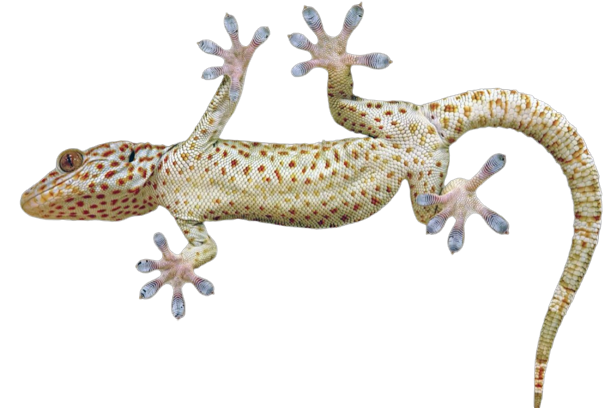Bio-inspired dry adhesion
Dry adhesion is attained from micro patterned interfaces developed from polymeric materials. These interfaces mimic the extraordinary reversible adhesive properties of the attachment devices at the toe pads of insects such as beetles, of spiders, and of heavier animals like the gecko. Dry adhesion functions via weak intermolecular forces called van den Waals forces. Thanks to specific hairy structures at the interfaces, such weak forces can develop robust adhesion. Because no glue is involved, there is no depletion of reagents, and adhesion is reversible and repeatable. The interplay between geometry, chemistry and mechanics defines the optimal design of these interfaces. Our group has developed, and is currently developing, mathematical and computational models to define the perfect desing of dry adhesives. Check out our papers.

Selected papers
A Kong, M Bacca (2022). A self-adhesion criterion for slanted micropillars. Extreme Mechanics Letters 52, 101663
D Sameoto, H Khungura, FH Benvidi, A Asad, T Liang, M Bacca (2022). Space applications for gecko-inspired adhesives. Biomimicry for Aerospace, 423-458
H Khungura, M Bacca (2021). The role of interfacial curvature in controlling the detachment strength of bioinspired fibrillar adhesives. Mechanics of Materials 160, 103914
FH Benvidi, M Bacca (2021). Theoretical limits in detachment strength for axisymmetric bi-material adhesives. Journal of Applied Mechanics 88 (12), 121007
H Khungura, M Bacca (2020). Optimal load sharing in bioinspired fibrillar adhesives: Asymptotic solution. Journal of Applied Mechanics 88 (3), 031004
JA Booth, M Bacca, RM McMeeking, KL Foster (2018). Benefit of Backing‐Layer Compliance in Fibrillar Adhesive Patches—Resistance to Peel Propagation in the Presence of Interfacial Misalignment. Advanced materials interfaces 5 (15), 1800272
M Bacca, JA Booth, KL Turner, RM McMeeking (2016). Load sharing in bioinspired fibrillar adhesives with backing layer interactions and interfacial misalignment. Journal of the Mechanics and Physics of Solids 96, 428-444